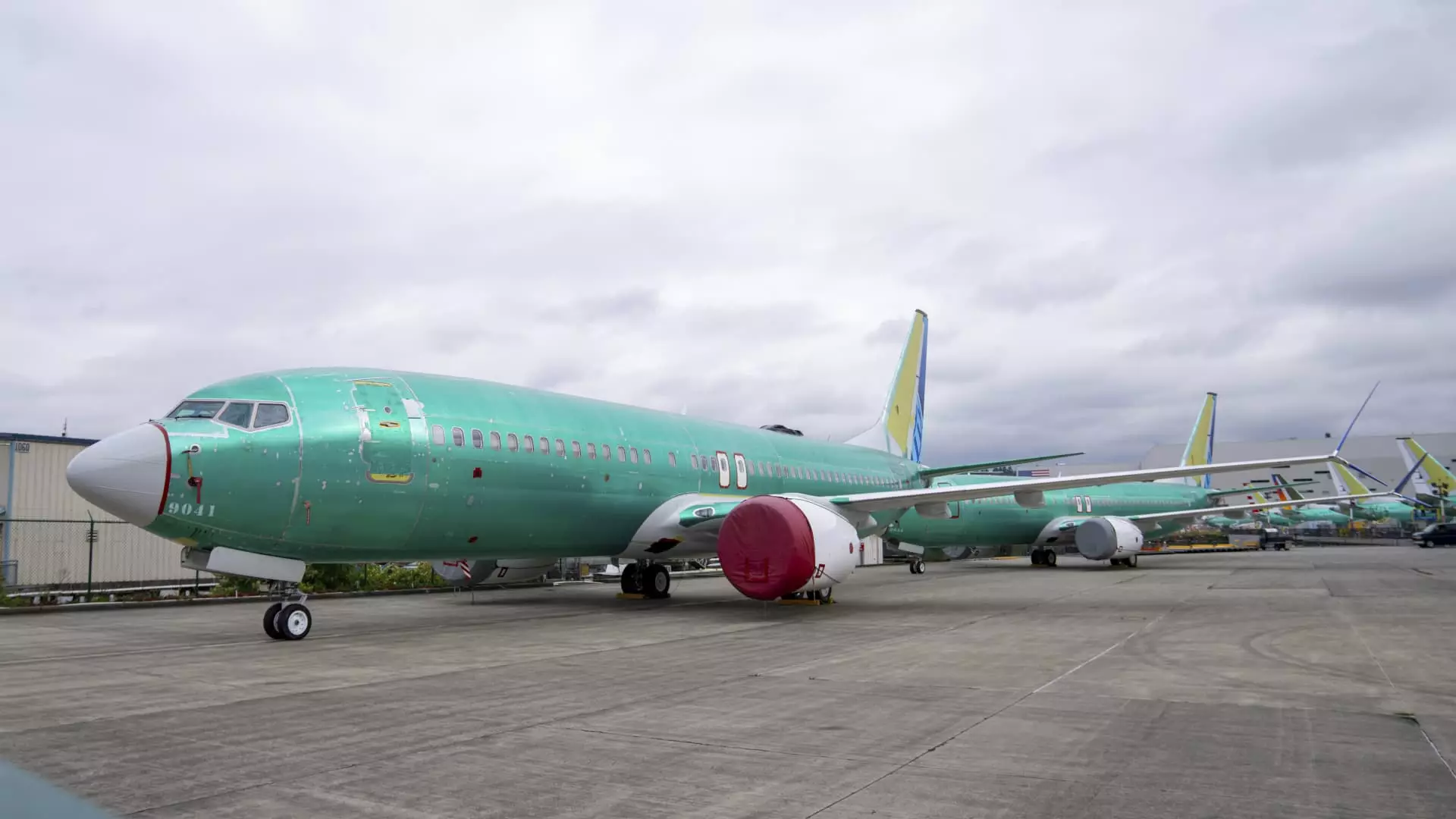In a significant shift reflective of mounting pressures and operational challenges, Boeing has announced a staggering reduction of its workforce by 10%, translating to approximately 17,000 jobs. This decision comes at a time when the aerospace giant is grappling with extensive financial losses and the ongoing repercussions of a machinist strike that has left its aircraft factories dormant for over a month. The implications of such a workforce reduction extend beyond the immediate impact on employees, signaling deeper structural issues within the company and the industry as a whole.
Financial Turmoil and Production Delays
Boeing’s recent disclosures indicate that the company anticipates a loss of nearly $10 per share in the third quarter, highlighting the severity of its financial situation. The organization is expected to incur staggering pre-tax charges amounting to $3 billion for its commercial airplane sector alongside a $2 billion charge for its defense division. Such losses underline a dire forecast where turbulence appears to be a recurring theme, with projected operating cash outflows reaching $1.3 billion.
Adding to this unfortunate situation, Boeing has confirmed a delay in the launch of its much-anticipated 777X wide-body aircraft, now scheduled for delivery in 2026 — a full six years later than originally planned. This compound delay not only reflects issues inherent in its production capabilities but also raises questions about the company’s strategic planning and ability to respond to market demands. The continuous turbulence faced by Boeing showcases a company struggling to regain its footing in an industry that demands resilience and agility.
Leadership and Strategic Decisions
At the helm of these changes is CEO Kelly Ortberg, who has been in office for just over two months. His tenure has already been marked by the administration of challenging decisions aimed at realigning the company’s operations. Ortberg’s acknowledgment of the serious challenges ahead—pairing defensive fiscal management with aggressive structural changes—illustrates the gravity of the situation at Boeing.
Ortberg’s directive to implement job and cost cuts signifies a departure from a growth-oriented mindset, instead shifting towards survival strategies in the face of unprecedented operational obstacles. As Boeing seeks to restore confidence among stakeholders, both in leadership and labor relations, the demand for transparent communication and trust-building becomes increasingly paramount.
One of the paramount challenges for Boeing during this tumultuous phase has been its labor relationship, particularly highlighted by the machinist strike initiated on September 13. The overwhelming rejection of a tentative agreement by union members indicates growing discord between the workforce and management. Boeing’s subsequent withdrawal of a contract offer and its filing of an unfair labor practice charge against the union illustrate a significant breach that may have long-lasting repercussions for both parties.
Negotiating in good faith is essential to building a cooperative workplace culture. However, the current situation reflects a broader struggle within industrial relations where both labor and management must navigate a complex landscape marked by mistrust and miscommunication. Boeing’s position, entrenched in its ambition to mitigate losses, runs the risk of alienating critical workers whose contributions are vital to the company’s revival.
Looking ahead, Boeing must not only address its immediate financial challenges but also reconsider its strategic vision for the future. Emphasizing innovation within manufacturing processes and investing in workforce training will be essential to revitalize its production capabilities and meet evolving customer demands.
The aviation sector’s recovery from the COVID-19 pandemic remains fragile, necessitating a nuanced understanding of market dynamics and consumer preferences. As other players in the industry also navigate challenges post-pandemic, Boeing must leverage its storied legacy and pioneering spirit to seize opportunities for revival and growth.
In light of mounting losses, delayed product launches, and strained labor relations, Boeing is at a crucial crossroads. The decisions made during this period will shape not only the company’s immediate future but also determine its long-term viability and position within the aerospace sector. By focusing on rebuilding trust with its workforce, implementing innovative production techniques, and fostering an adaptable business environment, Boeing can steer its path towards recovery and resilience amidst ongoing challenges.

